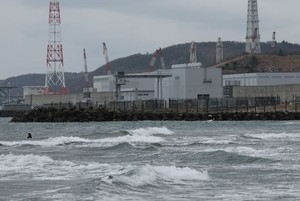Vox Populi, Vox Dei is a daily column that runs on Page 1 of The Asahi Shimbun.
October 4, 2021 at 12:50 JST
 The city government of Toyonaka, Osaka Prefecture, dispatches a “vaccine car,” a remodeled camping vehicle, to administer novel coronavirus vaccines at locations requested by citizens. (Asahi Shimbun file photo)
The city government of Toyonaka, Osaka Prefecture, dispatches a “vaccine car,” a remodeled camping vehicle, to administer novel coronavirus vaccines at locations requested by citizens. (Asahi Shimbun file photo)
The website for the prime minister’s office proudly reports progress in the novel coronavirus vaccination program. It cites 60 percent of the population fully vaccinated and 70 percent having received at least one shot.
Still, the flip side of the coin is that 30 percent have yet to get a single jab. I have also heard of wide regional disparities in vaccination rates.
I asked a senior official of one prefectural government on condition of anonymity to candidly evaluate the Suga administration’s vaccination program.
“To be honest, we have been pushed around by the central government over the past half a year,” the official said.
Vaccination of elderly people started in April. Soon after, Suga called for the elderly population to be inoculated by the end of July.
It worsened an already acute shortage of health care workers to administer vaccinations, causing prefectural and municipal governments to run around in panic.
Suga made a flurry of actions to accelerate the rollout, setting a target of 1 million shots a day, mobilizing the Self-Defense Forces and starting a workplace vaccination program.
Soon after the prefectural government in question began preparations for mass vaccinations, the central government abruptly suspended accepting applications for workplace inoculations in late June.
The official was stunned when the minister in charge “confessed” that the government had secured only a third of the amount of Moderna Inc. vaccines required for the program.
“The minister had spoken as if the government had been so lousy with doses that it could have even sold some off.”
Companies and organizations that signed up on the fourth day or later after the government began accepting applications ended up waiting for one to two months.
The official said the prefectural government’s vaccination schedules were also seriously disrupted.
A 47-year-old company employee who lives in this prefecture received her first shot on Oct. 2.
“I felt like I was left behind by society, but now I can feel a little reassured,” she said.
On my way back from the prefecture, I wondered if the prime minister’s office caused such wide regional disparities in vaccination rates with its strategy to push up overall rates by prioritizing large cities.
The Suga administration comes to a close on Oct. 4.
I wonder if it will also put an end to politicians singing their own praises for a policy that caused great confusion across the country.
--The Asahi Shimbun, Oct. 3
* * *
Vox Populi, Vox Dei is a popular daily column that takes up a wide range of topics, including culture, arts and social trends and developments. Written by veteran Asahi Shimbun writers, the column provides useful perspectives on and insights into contemporary Japan and its culture.




















A peek through the music industry’s curtain at the producers who harnessed social media to help their idols go global.
A series based on diplomatic documents declassified by Japan’s Foreign Ministry
Here is a collection of first-hand accounts by “hibakusha” atomic bomb survivors.
Cooking experts, chefs and others involved in the field of food introduce their special recipes intertwined with their paths in life.
A series about Japanese-Americans and their memories of World War II